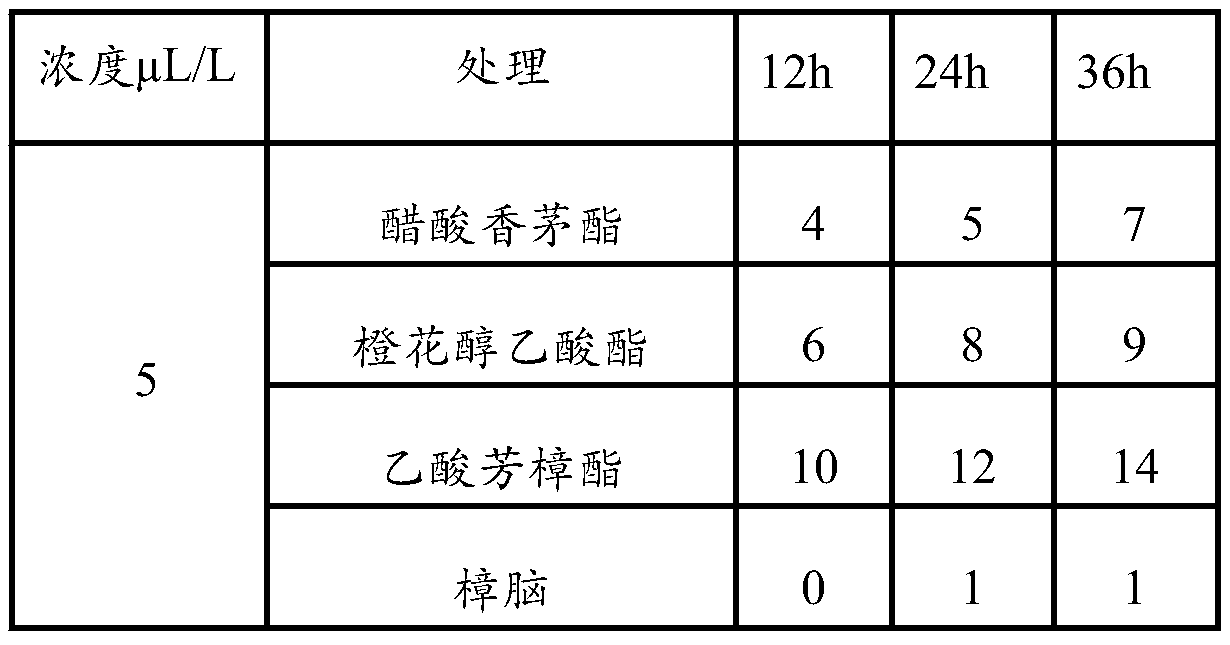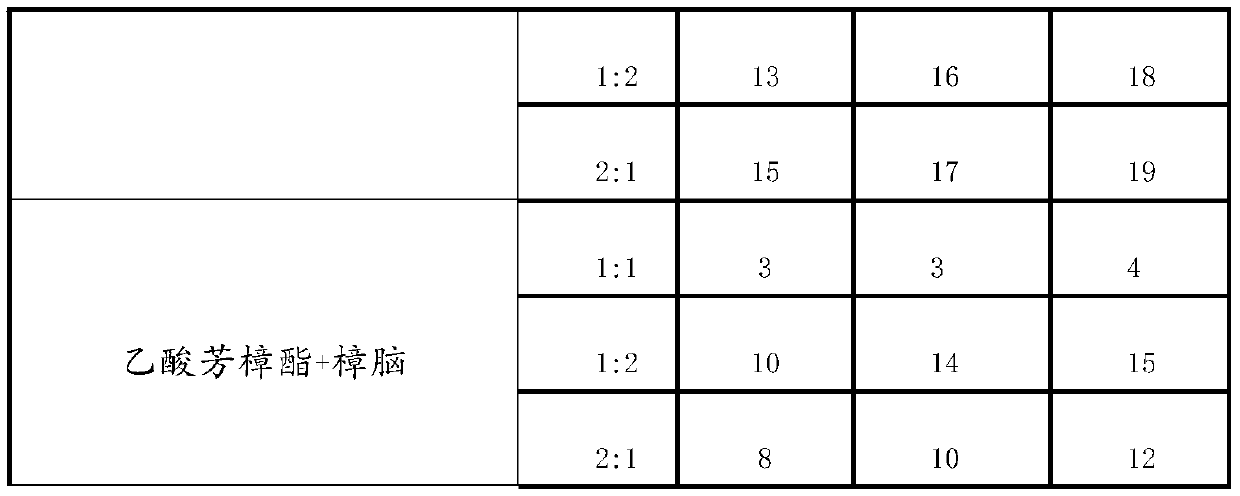Insecticide for controlling diamondback moth and screening method thereof
A screening method, technology of diamondback moth, applied in the direction of insecticides, biocides, botanical equipment and methods, etc., can solve problems such as drug resistance, achieve significant insecticidal effect, and easy to obtain the effect of production cost
- Summary
- Abstract
- Description
- Claims
- Application Information
AI Technical Summary
Problems solved by technology
Method used
Image
Examples
Embodiment 1
[0019] The impact of different single-substance botanical insecticides on diamondback moth
[0020] 1. Screening method for different single-substance botanical insecticides: S1. Select 1ml each of four plant-derived extracts from citronellyl acetate, nerol acetate, linalyl acetate and camphor to obtain four groups of Single-substance plant source extract, for use;
[0021] S2. Add 10ml of methanol to the four groups of single-substance plant-derived extracts prepared in S1, and mix uniformly to obtain the corresponding four groups of single-substance plant-derived insecticides;
[0022] S3. Set up an experimental group of diamondback moth corresponding to the four groups of single-substance plant-derived extracts prepared in S2, and add the corresponding diamondback moth to the four groups of single-substance plant-source insecticides of 5 ul / L respectively In the experimental group, wherein, the number of diamondback moths in each group of diamondback moth experimental gro...
Embodiment 2
[0028] The impact of different mixtures of botanical insecticides on diamondback moth
[0029] 1. Screening method for different mixtures of plant-derived insecticides: S1. Select 1ml of each of the four plant-derived extracts from citronellyl acetate, nerol acetate, linalyl acetate and camphor, and carry out according to different volume ratios. Combining two by two to make eighteen groups of plant source mixtures for later use;
[0030] S2. Add 10ml of acetone to the six groups of botanical mixtures prepared in S1, and stir evenly with a mixer at a speed of 50r / min to obtain the corresponding 18 mixture botanical insecticides;
[0031] S3. Set up a diamondback moth experimental group corresponding to the 18-mixture plant-derived insecticide prepared in S2, and add the corresponding diamondback moth experiment to 5 ul / L of the 18-mixture plant-derived insecticide. Among them, the number of diamondback moths in each group of diamondback moth experimental groups was 20, and 2...
Embodiment 3
[0038] The impact of different mixtures of botanical insecticides on diamondback moth
[0039] 1. Screening method for different mixtures of plant-derived insecticides: S1. Select 1ml of each of the four plant-derived extracts from citronellyl acetate, nerol acetate, linalyl acetate and camphor, and carry out according to different volume ratios. Three or three combinations to make twelve groups of plant source mixtures for subsequent use;
[0040] S2. Add 10ml of peanut oil to the twelve groups of botanical mixtures prepared in S1, and stir evenly with a mixer at a speed of 40r / min to obtain the corresponding twelve groups of botanical pesticides;
[0041] S3. Set up experimental groups of diamondback moth corresponding to the twelve groups of mixed botanical insecticides prepared in S2, respectively take 5 ul / L of twelve groups of mixed botanical insecticides and add corresponding side dishes In the moth experimental group, wherein, the number of diamondback moths in each ...
PUM
 Login to View More
Login to View More Abstract
Description
Claims
Application Information
 Login to View More
Login to View More - R&D
- Intellectual Property
- Life Sciences
- Materials
- Tech Scout
- Unparalleled Data Quality
- Higher Quality Content
- 60% Fewer Hallucinations
Browse by: Latest US Patents, China's latest patents, Technical Efficacy Thesaurus, Application Domain, Technology Topic, Popular Technical Reports.
© 2025 PatSnap. All rights reserved.Legal|Privacy policy|Modern Slavery Act Transparency Statement|Sitemap|About US| Contact US: help@patsnap.com



